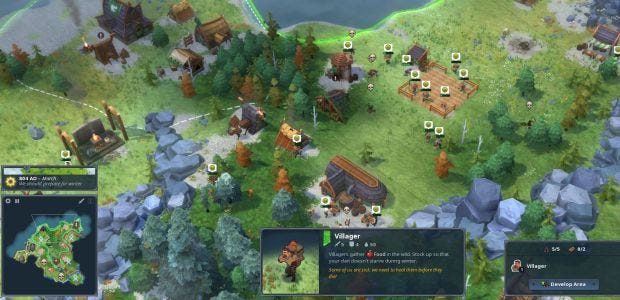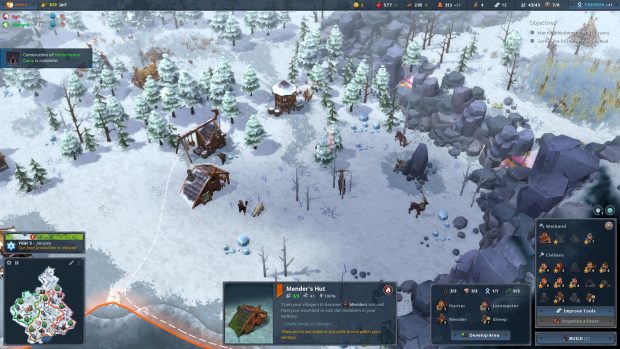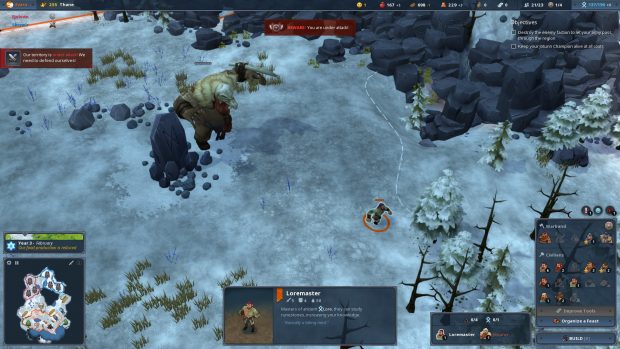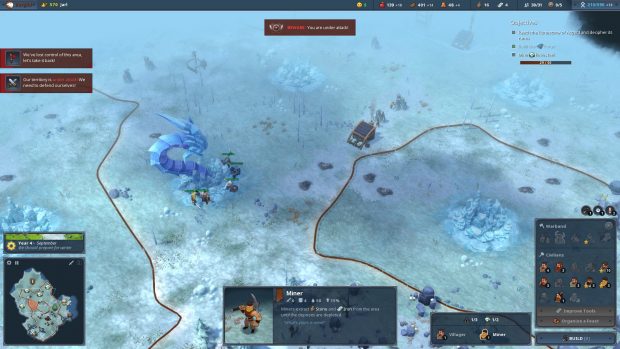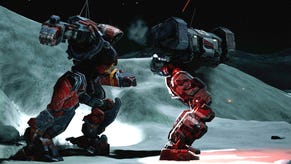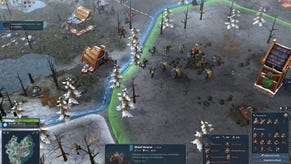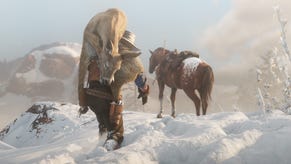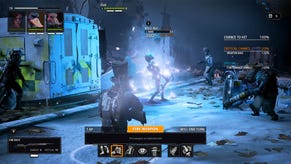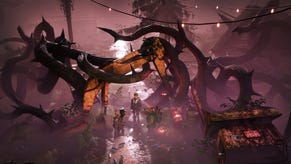Wot I Think: Northgard
Northgood
My clan folk are starving, freezing and diseased. It was a harsh winter, and the rats that raided our food supply in January have forced me to butcher my only remaining sheep. The future looks grim, but my people’s suffering is curtailed when one of my opponents becomes so famous that he wins the game outright. Losing is a strange kind of mercy.
Despite its harshness, Northgard is a superb RTS that’s easy to pick up but difficult to master. That may be an overused phrase, but it’s justified here - let me tell you why. Hurry up, winter is coming.
For starters, this is a slow-paced game. In the icy climes of Northgard, ‘rush’ tactics might involve attacking someone in the first 20 minutes of a match, not the first 5 - but this isn’t a game about rush tactics. It isn’t even a game about military conquest, unless you want it to be.
Northgard is a game about careful decision-making, and about managing resources and priorities in a land that really doesn’t want you in it.
One of the first buildings you’ll plop down each time you start with a fresh batch of eager-eyed Vikings is a scout camp, which lets you turn a villager into a unit that will set about unveiling the map one tile at a time. Those tiles contain resources like deer, fish, stone or iron, and deciding where to colonise and when is the first of many decisions that might see your clan get decimated a few years (about 15 minutes) down the line.
You’ll need food: without specialised workers to feed your growing population, they’ll starve. You’ll need wood: without lumberjacks, your people won’t be able to heat their homes and they’ll freeze. You’ll need stone: without miners gathering stone to upgrade your buildings, there’ll come a point where they can’t produce enough and your people will starve. Or freeze. You can see why people think twice about fielding an army, which costs both money and manpower.
Fortunately, there are more ways to win a war than with swords, throwing axes and shields. There are some special units, but those weapons make up the three basic ones. Northgard has depth, but more impressive is its breadth. A skirmish against the AI or multiplayer - which is where the game really shines - offers five different ways to win. They’re all straightforward, and achieving victory is usually a case of emphasising one part of your Norse machinery over the others.
Whichever goal you choose, no cog of that machinery can really be ignored: without money you can’t upgrade buildings or turn your villagers into military units, and without fame or lore (there’s a simple tech tree) you’ll lack vital bonuses. That does mean that even though you might adapt your strategy based on what tiles you find, you’ll still often find yourself repeating the same tactics.
That’s not the chore it sounds like though, because refining those tactics is so fun. Your clan will drink every delicious drop of efficiency you can eke out of each tile, and because every tile has a limited number of building slots it’s important to plan ahead. Take a look at what I’ve got going on in this juicy locale, for instance. There’s an upgraded deer camp, a silo that boosts food production, and a lore stone.
That menders hut isn’t there by accident: the healers provide another special bonus to production because I’m playing as the Clan of the Boar. There are currently six different clans and plans to add more, and they all come with bonuses that make them suited to different victory conditions. The Boar is all about lore, the Wolf is good in a scrap and the Stag has an easier time becoming famous. They also all have one or two abilities that can change up your strategy in radical ways, like the Raven’s knack for colonising with money rather than food, or the way the Goat clan can turn to sheep for a steady source of food.
Planning ahead in terms of construction is just the tip of the iceberg. I’ve started positioning villagers next to building sites that I’m just about to be able to afford, and turning my healers into woodcutters whenever they’re not busy sticking people up. I’ve recruited warriors, cleared zones of hostile wildlife, then quickly liquidated my warriors into fishermen to stave off the ravages of winter. It's a form of micromanaging, but it's micromanaging with intent.
We should talk about winter though. Winter is the worst, though I wouldn't have it any other way. Every nine months, Jack Frost rolls around and does his best to make your life miserable. Food and wood upkeep costs rocket, and your units get an attack penalty. More troubling still, special events like rat plagues and blizzards pop up every year to compound your headache. As with the season itself, you can see exactly when these events will arrive - though if that’s enough to ensure you’re always prepared then you’re better at this than I am. Or maybe you’re just playing as the Clan of the Bear, who can strut around in winter while the rest of the clans are huddled around their hearthstones.
There’s never an overwhelming amount of information, but every decision you make requires thought and planning. I could distill a large part of the learning curve into figuring out how to avoid certain bottlenecks, but that would risk misrepresenting Northgard as a dry, min-maxing affair. If you’re into that sort of thing - and I am - then great! Northguard is an excellent little efficiency engine builder. It’s also an efficiency engine that comes alive, and the weather only plays one part in that.
There are the little details, like the way units sometimes shout their job titles as you reassign them. There are the giants and kobolds that you can trade with or slaughter, and the massive mythical beasts that can be hunted down for fame. One of Northgard’s best ideas is the special central map tile on each map, some of which have their own victory condition. You might win by forging a legendary sword, or amassing enough food to settle next to Yggdrasil. Those have been the focal point of some of my most memorable multiplayer matches, with one player struggling to hold that special tile against the onslaught of the others.
The singleplayer campaign (which I’ll get to in just a tick) and skirmishes against the AI give you plenty to do if you’re not interested in multiplayer, though playing against others is where I’ve had most of my fun. The slow pace means there’s often plenty of time to chat, and there’s a certain joy to hearing the anguished cries of your friends as their villagers get eaten by wolves. Or bears. Or Draugr.
I’ve left the campaign til last because although it isn’t half bad, it doesn't reflect the A-tier game that's underneath it. The story is about one angry Viking chap’s quest to avenge his father’s death, and very little about that plot or its characters drew me in. The writing isn’t great, and that’s partly down to some clumsy translation - though I doubt I’d have been blown away by it if I was hearing it in the original language.
The campaign missions start off by slowly introducing each system, which anyone who’s spent any time playing in early access will inevitably find a tad dull. I can’t really fault them as levels that are designed to teach people how to play, mind, and there are some surprises tucked away in those early missions.
It does more to mix things up as it goes along, and while it’s not bursting with imaginative ideas in the same way as the Starcraft campaigns, there are some good ones. A late mission had me playing whack-a-worm with a giant frost monster, where I had to mine out ore deposits from under its nose in order to craft a weapon capable of killing it. That job was complicated by the worm’s love of snacking on those very minerals.
I also saw the AI get up to some silly things, like sending two poor warriors to die at the hands of half a dozen draugr. On one occasion, just as I won a level the game crashed and I had to start over from the beginning. Despite its flaws, the campaign does serve to put a face on the various clans, injecting them with more personality than a buff to fish production ever could. It’s best seen as a vehicle for teaching you how the game works, though it's a shame that the vehicle in question is a slightly leaky canoe rather than a longship.
Northgard is simple in all the right ways, challenging not because of complexity but complacency - it's harsh, but rarely unfair. Every system clicks together to create tense, satisfying matches where every decision matters. I do have little niggles, like how you can’t queue actions or set spawn points, but at the end of the day I don’t really care. Neither those small complaints nor a slightly bland campaign can stop this being one of the best RTS games I’ve played.
Northgard is out now for Windows and Mac, available via the Humble Store and Steam for £24.
